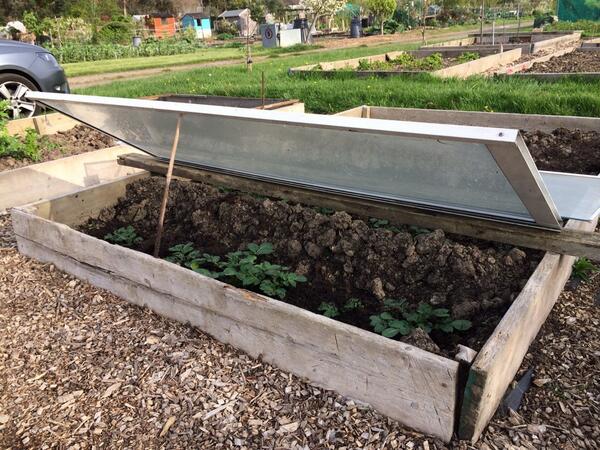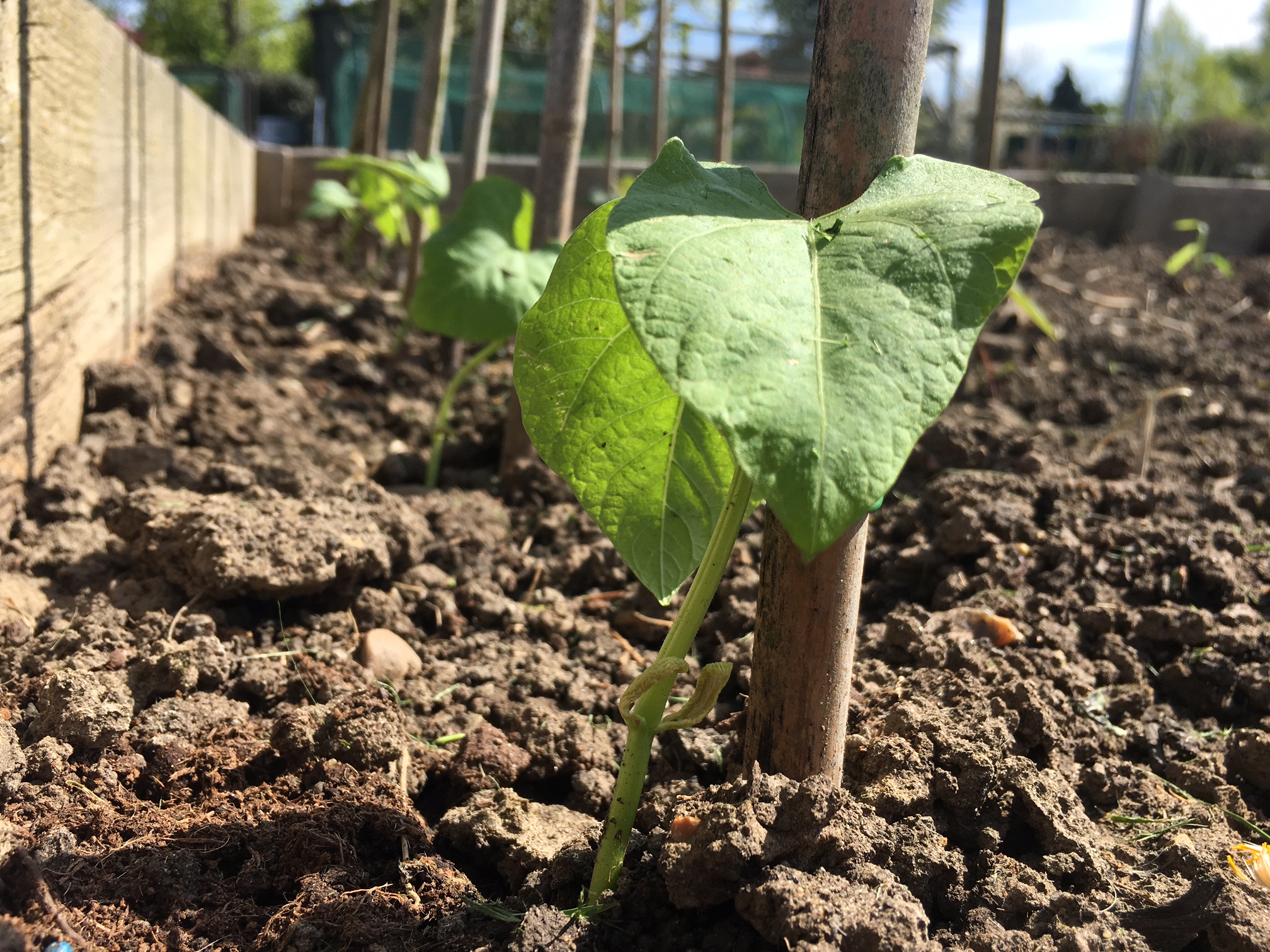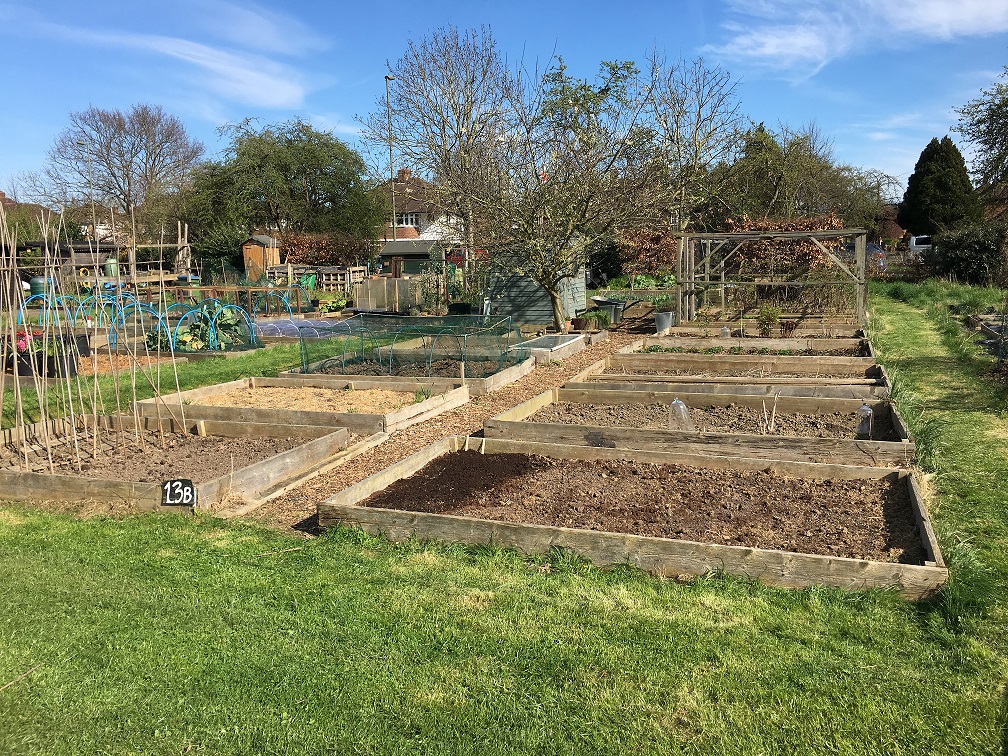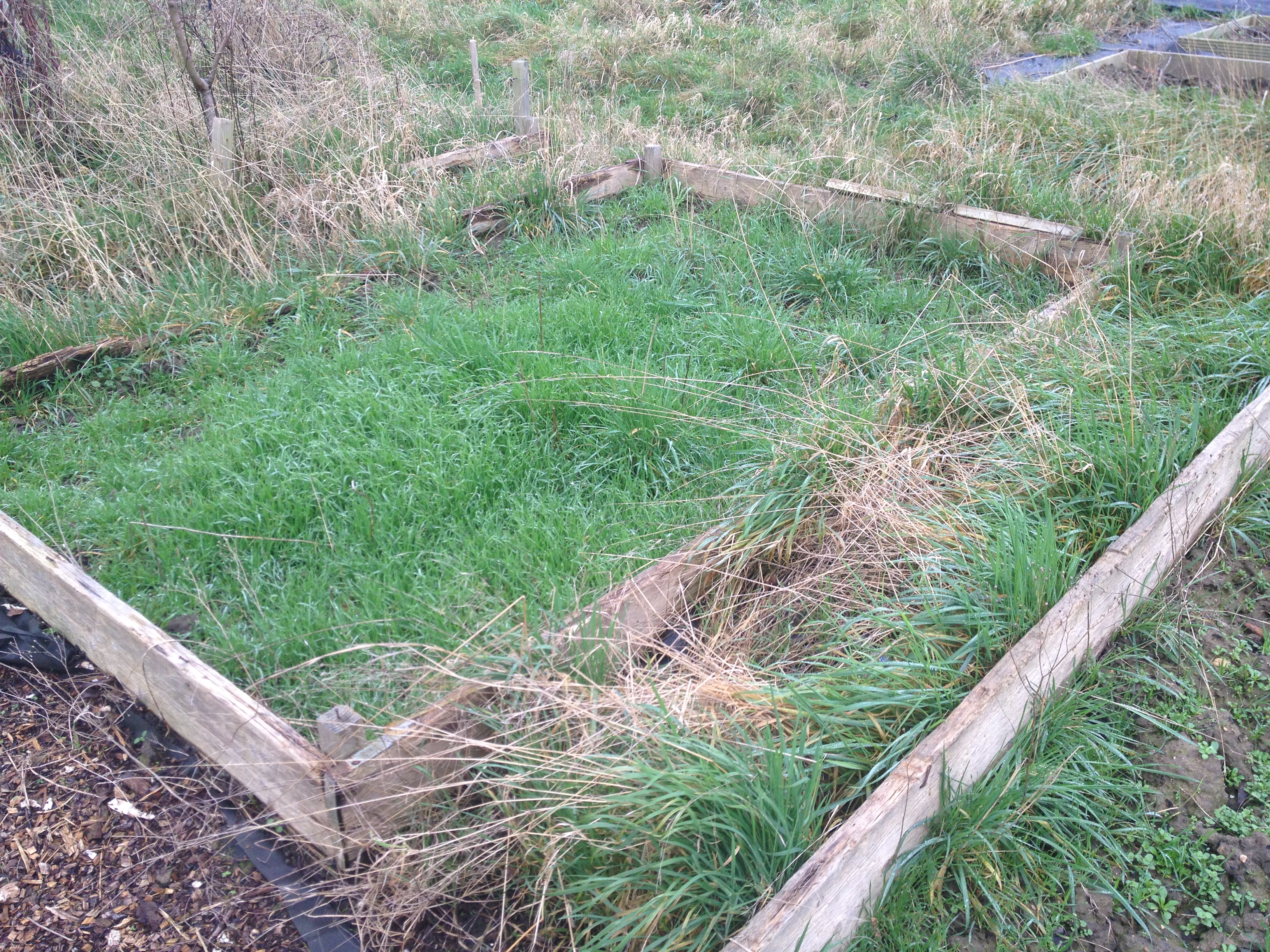Cold frames are an all important, halfway house for protecting tender seedlings from harsh frosts. They tend to be a stand alone item that gardeners either buy or make, and sometimes they’re an appendage to a greenhouse.
I take a slightly different approach on my allotment, because I have beds that are surrounded by scaffold boards that are around 6-9 inches higher than the soil. Over the years I’ve scavenged several shower screens, and patio doors that are around the same width as my beds. This means that I can jury rig a cold frame on any of the beds to either protect seedlings, or in the case of the photo here give some early potatoes a helping hand.



